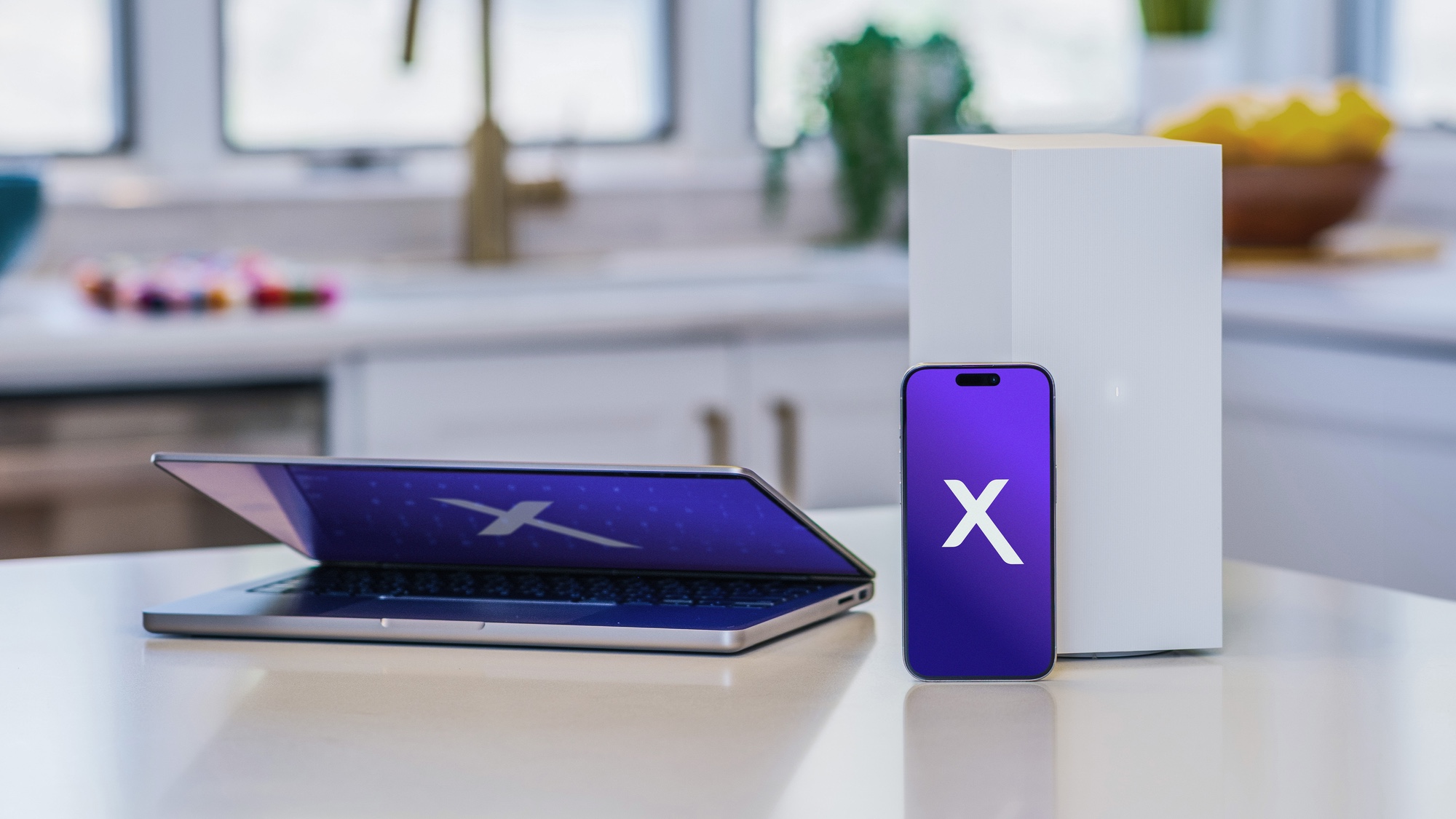Apple Watch vs. Pebble Time Steel: What Should You Wear?
Now that Apple announced the Apple Watch, how does it compare to the Pebble Time Steel? Here’s how the two wearables stack up.
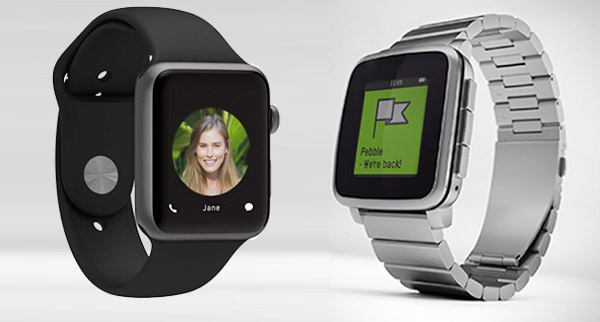
Apple is finally entering the smartwatch arena with a device that comes in two sizes, has a color touchscreen, and includes features such as Siri, a heart rate monitor and Apple Pay. Available beginning April 24 and starting at $349, the Apple Watch is easily the most eagerly anticipated device in this category. But how does it compare to Pebble's newest smartwatch, the Time Steel, available starting in July for $299?
We examined both wearables using seven criteria to see which device holds the early advantage in the battle for your wrist.
Editors' note: This comparison is based on our Apple Watch hands-on time at the launch event as well as our hands-on with the Pebble Time Steel at Mobile World Congress. We'll update our face-off with a definitive verdict once both watches are released.
Design
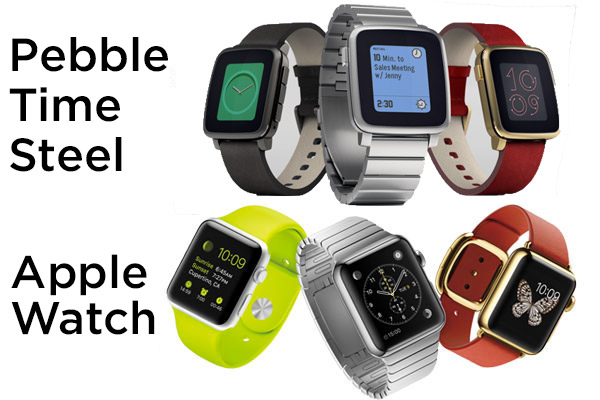
Both the Apple Watch and the Pebble Time Steel have squarish displays, but the similarities end there. The Pebble Time Steel is 0.37 inches thick--20 percent thinner than the original Pebble--and slightly thinner than the Apple Watch (0.41 inches). The Apple Watch will come in two sizes: 1.5 x 1.3 inches, and 1.7 x 1.4 inches.
MORE: Best Smartwatches 2014
The Time Steel will be offered in three colors (silver, gunmetal black and silver), and each comes with a matching metal band and a leather strap. The $199 Pebble Time, which has a plastic body, comes in one of three colors—black, white or red—and will have a silicone band.
The Apple Watch will come in four finishes (stainless steel, black stainless steel, anodized aluminum and gold), and will be available with six different straps, which include leather, plastic and stainless steel.
Early winner: Apple Watch. More color options, both in the band and the case—as well as two sizes—make this the more stylish choice.
Display
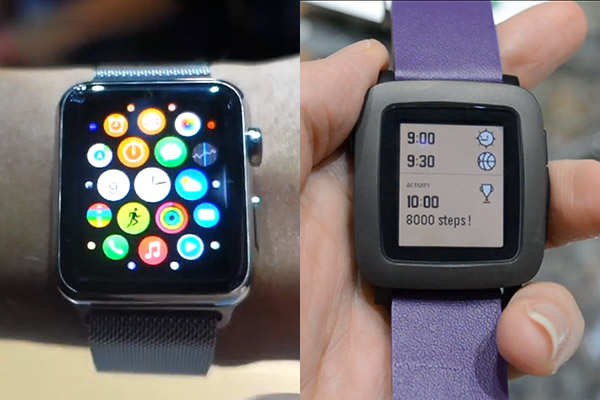
Unlike the black-and-white Pebble, the Pebble Time Steel has a color e-paper display, but one that's still protected by Corning Gorilla Glass. In comparison, the Apple Watch has a color touch screen that not only responds to swipes, but also can recognize how hard you press on the display. For instance, pressing with two buttons when communicating with a contact lets you share your heartbeat.
Early winner: Apple Watch. Its display is more colorful and vibrant, and it's touch-sensitive.
Interface
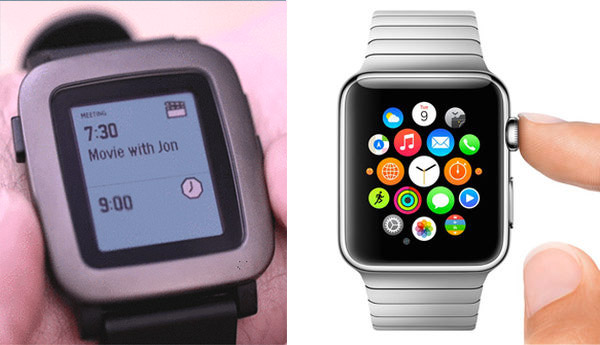
Apps on the Apple Watch are displayed as small circles that radiate out from the center of the display. You can use either your finger or the digital crown on the side of the device to navigate and select icons. The digital crown also lets you zoom in on all sorts of content, ranging from maps to photos.
The Time Steel will feature Pebble's new Timeline interface, which lets you see past, current, and future events from each day using the three buttons on the right side of the watch.
Early winner: Pebble Time Steel. The Apple Watch's UI is more engaging and innovative, but the Pebble Steel's is more straightforward and has less of a learning curve.
Apps
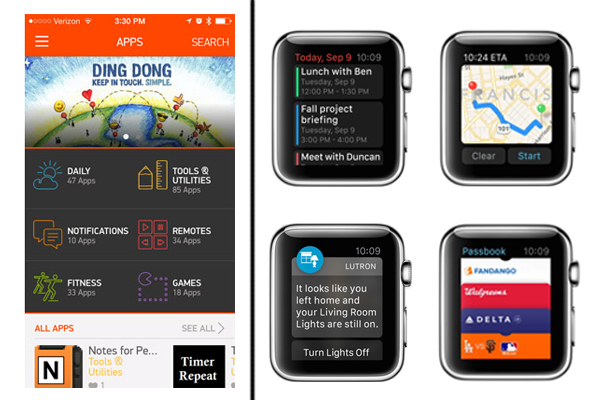
Currently, there are more than 6,500 apps and watchfaces available for the Pebble Time Steel, including everything from RunKeeper to ESPN to Yelp. Plus, the Pebble works with both Android and iOS devices, whereas the Apple Watch works only with iPhones.
The Apple Watch won't launch with nearly as many third-party apps, but the quality of what's been announced looks strong. CNN, Instagram, Fandango, MLB.com, OpenTable, Shazam and Twitter will be among the first apps available.
Early winner: Pebble Time Steel. It has more apps—for now.
Features
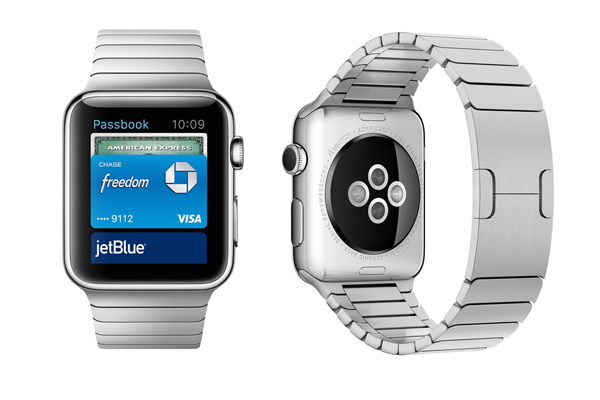
Unlike earlier Pebble smartwatches, the Pebble Time Steel has a microphone, which will let wearers respond to notifications and make short voice memos (but not make calls). Plus, Pebble will let developers create custom straps that attach to the Time's battery connector, allowing for additional functionality, such as GPS, a heart rate monitor, or an additional battery.
Apple packed its Watch with NFC, which will let you pay for things and check into hotel rooms from your wrist. You also get a heart rate sensor and an accelerometer to measure how far you've moved. Also, the Apple Watch has a microphone and speaker, so you can use it with Siri and make calls.
Early Winner: Apple Watch. It simply has more sensors and functionality.
Battery Life

The Time Steel should last up to 10 days on a charge, according to Pebble. That would make it the best battery life we've seen from any smartwatch. Apple said its watch should last up to 18 hours during a typical day, which would be slightly longer than other smartwatches with color displays, such as the Samsung Gear Live and Moto 360.
Early winner: Pebble Time Steel. It's nice not to have to remember to recharge a watch every night.
Pricing
The Pebble Time Steel costs $299—$50 less than the starting price for the Apple Watch Sport Edition. However, other versions of the Apple Watch will cost much more—up to $17,000 for some limited-edition versions.
Early winner: Pebble Time Steel. The Apple Watch does more, but $349 is a lot to pay for a smartphone accessory.
Outlook
For now, the Pebble Time Steel looks to be the better smartwatch. It’s less expensive, lasts longer on a charge, works with Android and iOS and has more apps. However, the Apple Watch has a snazzier design, a better display, and many more features.
We’ll have to see how many apps the Apple Watch has at launch, which would tip the scales in its favor. Still, this is a preliminary and cursory look at both devices, and a lot could—and will—change between now and when the Time Steel is released.
Sign up to get the BEST of Tom's Guide direct to your inbox.
Get instant access to breaking news, the hottest reviews, great deals and helpful tips.

Michael A. Prospero is the U.S. Editor-in-Chief for Tom’s Guide. He oversees all evergreen content and oversees the Homes, Smart Home, and Fitness/Wearables categories for the site. In his spare time, he also tests out the latest drones, electric scooters, and smart home gadgets, such as video doorbells. Before his tenure at Tom's Guide, he was the Reviews Editor for Laptop Magazine, a reporter at Fast Company, the Times of Trenton, and, many eons back, an intern at George magazine. He received his undergraduate degree from Boston College, where he worked on the campus newspaper The Heights, and then attended the Columbia University school of Journalism. When he’s not testing out the latest running watch, electric scooter, or skiing or training for a marathon, he’s probably using the latest sous vide machine, smoker, or pizza oven, to the delight — or chagrin — of his family.
-
-XTC- Personally, I'm in love with Apple's design. It's just so sleek and smooth, in my opinion they get the vote for design hands down.Reply -
eklipz330 pebble steel looks antiquated next to apple's watch. but i would purchase neither. my phone can do literally everything better than this watch. i can imagine myself fumbling around on the watch to get something done which would take half the time on a phone.Reply -
Onus The band expansion for the Pebble has the potential to beat the stuffing out of Apple as far as expandability and features; attach what you need, and skip what you don't. Ten days of battery life is a good start; bring the price down and add another 50%-100% to that battery life, and we can talk.Reply
A mere 18 hours of battery is a dealbreaker for Apple.
It's much quicker to check my watch for the time than my phone. The same needs to be true of any other function added to it.
Nothing justifies the prices for any of these, except for those who have more money than sense. You'll get much better everyday use out of a $40 Timex or Casio and a quality $100-$200 multi-tool like a Leatherman than you will out of a "smart"watch.
-
crisan_tiberiu So, now we have to charge our watches daily... What happened with the 10 year long life battery? :) (i know, these watches are different, but hey, it is still a watch...)Reply -
tomc100 Technology for a smart watch is way too primitive at the moment for it to make any sense, especially when you have a smart phone. Until they couple a smart watch with smart glasses where you can surf the internet, watch video, skype, gps, camera, and email then it's redundant.Reply -
eklipz330 "It's much quicker to check my watch for the time than my phone. The same needs to be true of any other function added to it."Reply
that's what my $20 timex is for -
Pedasc So the Time Steel will be offered in three colors; silver, gunmetal black, or silver? I think I see a gold in the above picture, I assume that is the other silver and that is just an error.Reply
My question would be how is the readability in sunlight? What about low light? I assume the Pebble has a backlight. If I would even consider this I would have to be able to just glance down at my wrist at any time and see the information I want.
The battery life of the Apple Watch is a disappointment. You never quite get the max rating, usually that is under "normal use". I see this going dead in the evening a lot.
